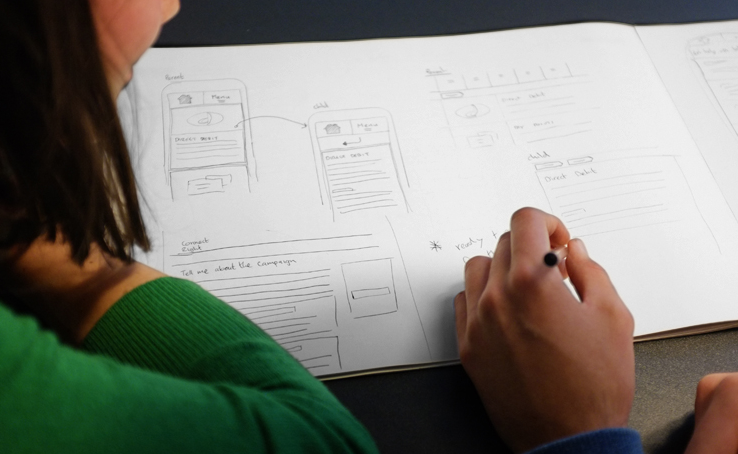The value is in the service, not the app

We’re a digital product agency, so developing apps and digital services is our bread and butter. Unsurprisingly, this means clients tend to approach us once they’ve decided that’s exactly what they need; you don’t wander into a tailor if you’re not in the market for a suit, after all.
We’re a digital product agency, so developing apps and digital services is our stock in trade. Unsurprisingly, this means clients tend to approach us once they’ve decided that’s exactly what they need; you don’t wander into a tailor if you’re not in the market for a suit, after all.
This means we talk a lot about apps and platforms and technology, but often, what we’re really excited to get to grips with is the problem or idea that the digital service or product is to be designed around.
After all, an app is just a machine that performs a job. It isn’t intrinsically valuable on its own. Instead, it’s the underlying service design – the part of the recipe that solves a problem for the customer – that adds value. The technology, the app, is merely a way for the user to consume or access that service.
Sometimes, I think businesses can lose sight of this simple truth. Instead, it seems increasingly common to operate with the baked-in assumption that whatever the problem, an app is the only answer. Technology will cure all ills.
I want to challenge this belief, as my twelve years experience in digital strategy and development tells me that this simply isn’t the case. Indeed, sometimes an app can actually make things worse.
Bring me your problems
Rather, the best solutions start with a focus on a problem, and problems are much better solved when the solution isn’t prescribed.

In essence, just tell me the issue; who is encountering a problem, and what do they need to do. Using just these two touchstones we can start a user-focused service design process, beginning at the bottom and working upwards to build a full understanding of what and why, and the solution to the issue will usually naturally follow.
Spoiler alert; the solution may not be a new-build mobile app.
In fact, I can point to multiple instances where clients have approached us looking for a bespoke app build, but, once we’ve got to grips with their idea or problem, we were able to direct them towards an existing service or platform that solves their issue (often for a fraction of the cost of contracting us). Likewise, I can recall clients that have been looking to solve one issue, but upon examination, we’ve found that issue to be caused by something far deeper, but also far more valuable to solve.
These examples underpin why we find it important at Browser to work closely with clients to write and develop a full project brief before we start any coding work. The benefits of this are two-fold.
We, as design partners, build a genuine comprehension of the purpose of the service and the business case and model that it is built upon, both of which are key principles of effective service design. Our clients, on the other hand,
The value of the discovery phase
The space in which this collaborative brief writing process happens is usually called a discovery phase, and this can take place either as the first part of a full idea-to-product project, or as a standalone scoping and feasibility process.

When we approach a discovery phase, we keep three important principles in mind.
- Take a broad view – It’s vital to look at problem or product idea in as broad and holistic a manner as possible. That means considering everything that underpins the issue, including operational processes and human factors.
- Question assumptions – It’s useful to come at a problem without prejudices about what can and can’t be done, and what can and can’t be changed.
- Apply a framework – Applying a structured thought process can help break large questions or problems down into smaller, more manageable chunks. We regularly use the Jobs to be Done and Design Thinking frameworks within our team.
It’s once we’ve been through this process – exploring the avenues open to an organisation while maintaining a clear focus on the user and the problem along the way – that it becomes possible to see what shape a solution or end product may take. If that’s a bespoke app, platform or digital service, great, but it’s equally important to be open to the idea that the best solution for your users could just as easily be a new internal system or an off the shelf service or product.
If you’re interested to find out how our digital strategy services can help with a project you have in mind, or if you’ve got a digital product you need help building, get in touch with us and we’ll be delighted to help. Alternatively, if you’d like to read about how our digital strategy services helped the Mayor of London better support SMEs, check out our latest case study.